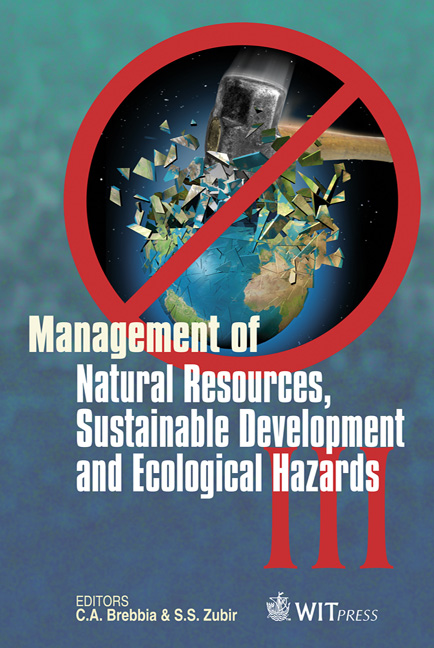Comparison Of Adsorption Behaviour Of Coconut Coir Activated Carbon And Commercial Activated Carbon For Textile Dye
Price
Free (open access)
Transaction
Volume
148
Pages
12
Page Range
105 - 116
Published
2011
Size
770 kb
Paper DOI
10.2495/RAV110111
Copyright
WIT Press
Author(s)
T. Khan & M. Chaudhuri
Abstract
The objective of the study was to prepare activated carbon from coconut coir and compare its adsorption behaviour for textile dye with that of a commercial activated carbon. The coconut coir activated carbon (CCAC) and commercial activated carbon (CAC) were characterised in terms of ash content, bulk density, pH, pHZPC, surface area, micropore area, micropore volume, average pore diameter, surface morphology and surface functional groups. Adsorption of a textile dye, Acid Red 18 (AR 18), by CCAC and CAC was examined. Batch adsorption test showed that extent of dye adsorption was dependent on dye concentration, contact time and pH. Equilibrium adsorption was attained in 240 min and maximum adsorption occurred at pH 2. Adsorption by CCAC and CAC followed pseudo-second-order kinetics and equilibrium adsorption data were described by the Freundlich and Langmuir isotherm models. CCAC showed higher adsorption capacity for the dye [25.7 (Freundlich) and 48.5 (Langmuir)] compared to that [12.0 (Freundlich) and 37.3 (Langmuir)] of CAC. CCAC is a suitable substitute for CAC in the removal of acid dyes from aqueous solution Keywords: Acid Red 18, activated carbon, adsorption, coconut coir, Freundlich isotherm, Langmuir isotherm.
Keywords
Acid Red 18, activated carbon, adsorption, coconut coir, Freundlich isotherm, Langmuir isotherm





